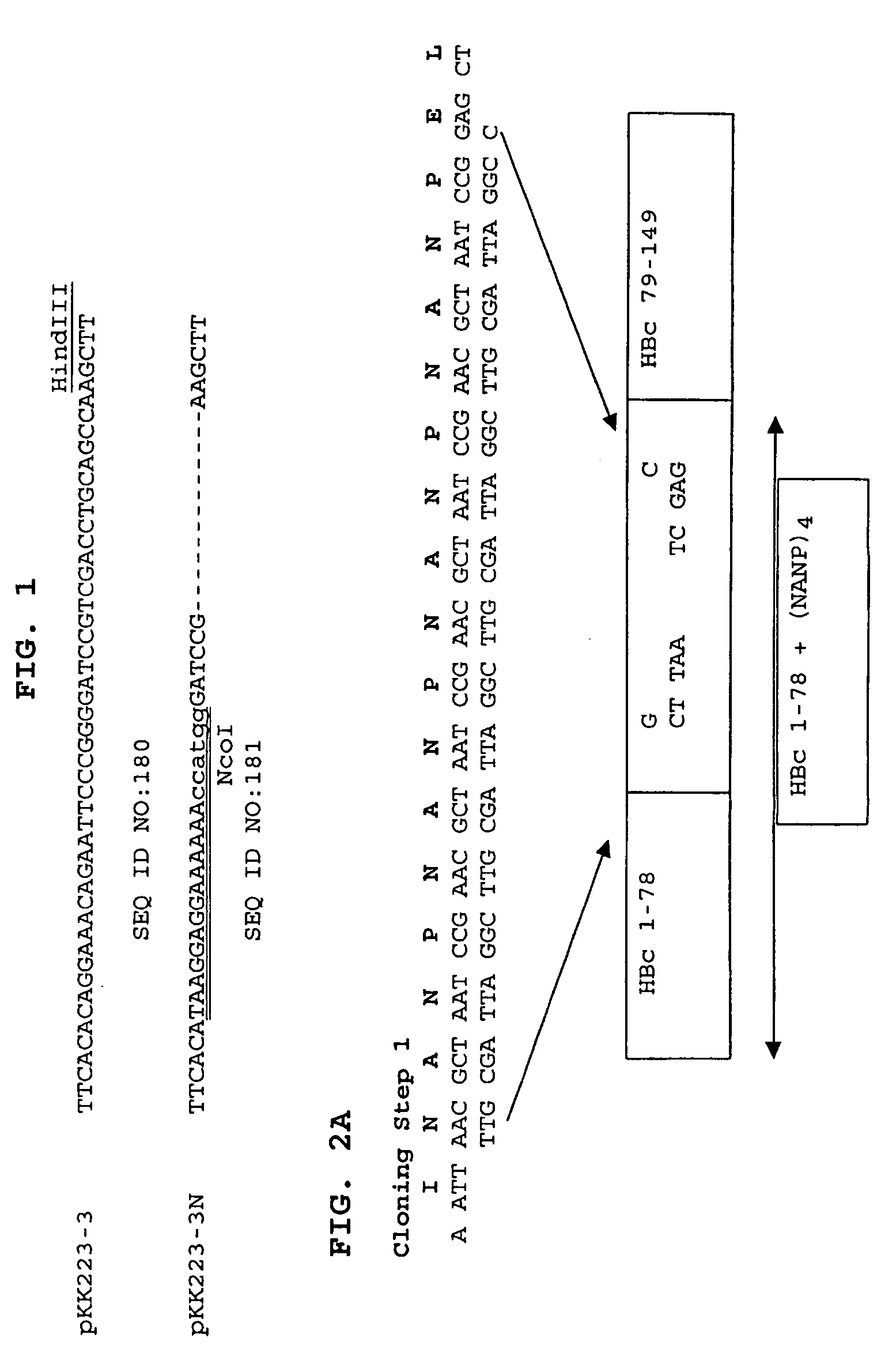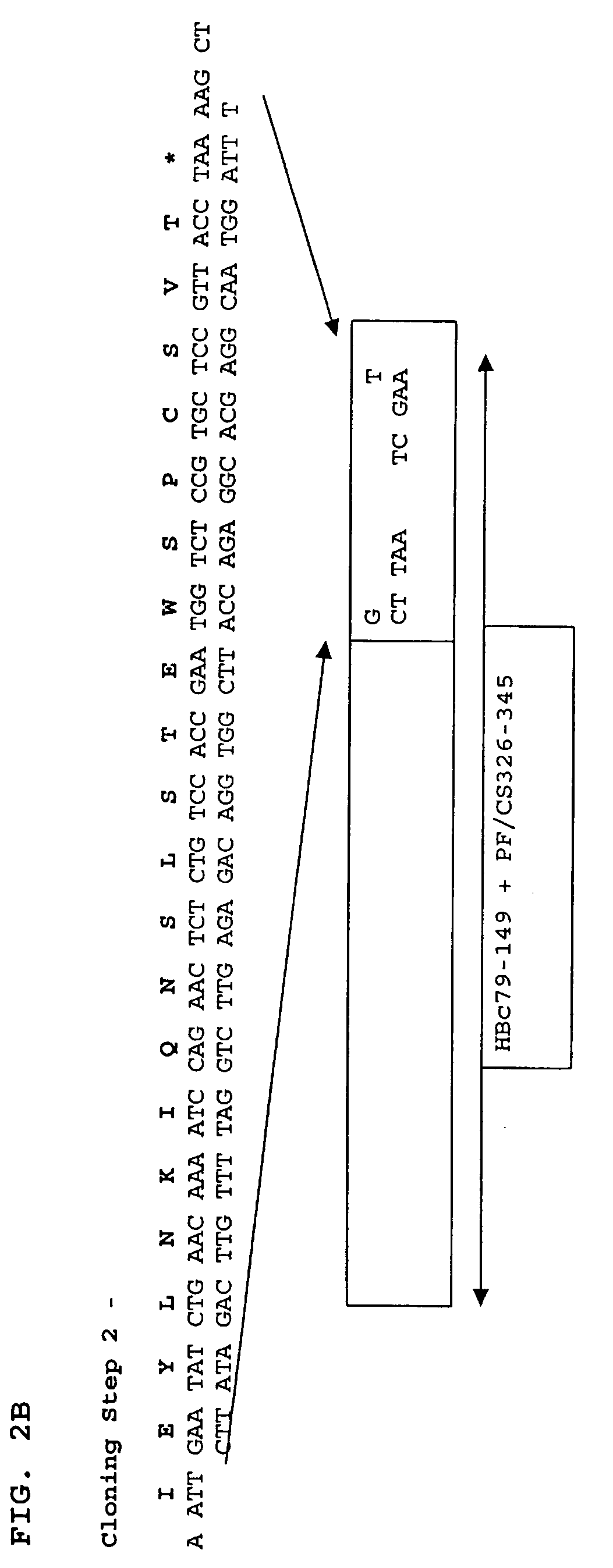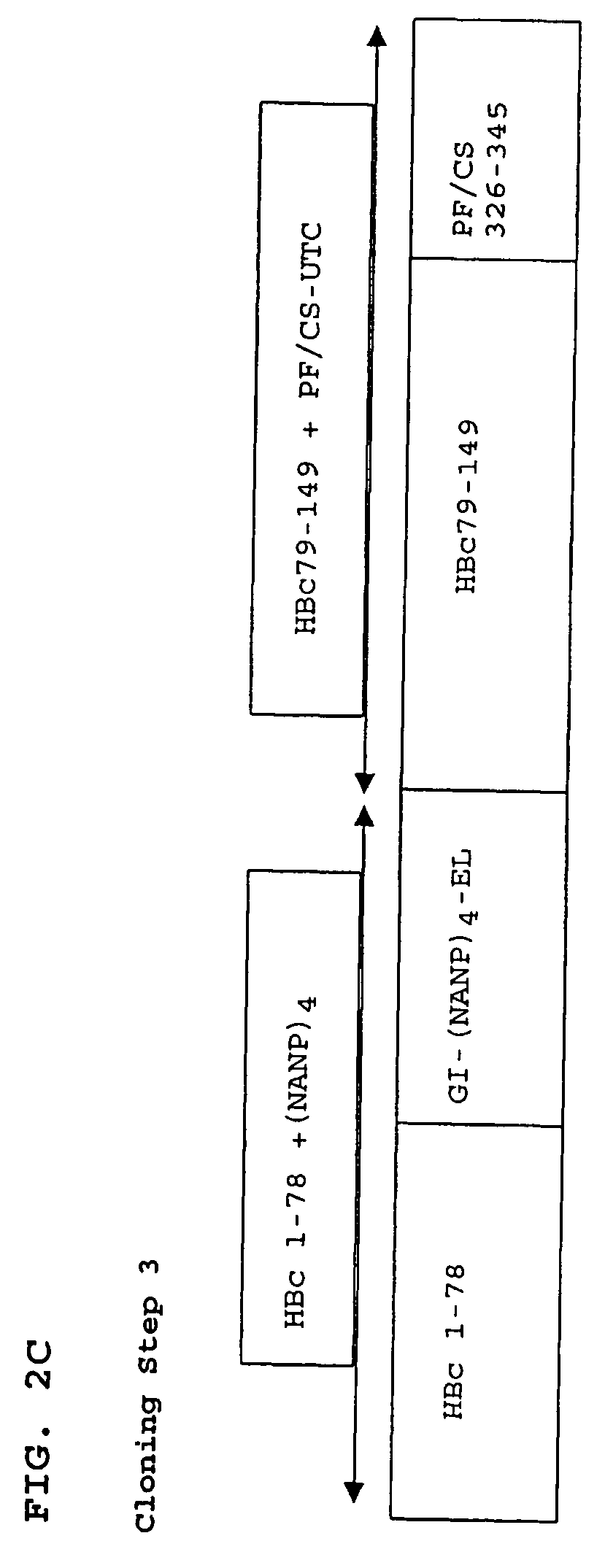Malaria immunogen and vaccine
a technology of immunogen and malaria, applied in the field of immunogen and vaccine, can solve the problems of not being able to effectively fight any form of malaria, being less attractive to the immediate needs of travelers and the military, and unable to use them as vaccines in vitro, etc., and achieves the effect of high antibody titers, easy preparation, and high antibody titers
- Summary
- Abstract
- Description
- Claims
- Application Information
AI Technical Summary
Benefits of technology
Problems solved by technology
Method used
Image
Examples
example 1
[0226] Chimer Preparation
[0227] A. Preparation of Plasmid Vector pKK223-3N, a Modified Form of pKK223-3
[0228] Plasmid vector pKK223-3 (Pharmacia) was modified by the establishment of a unique NcoI restriction site to enable insertion of HBc genes as NcoI-HindIII restriction fragments and subsequent expression in E. coli host cells. To modify the pKK223-3 plasmid vector, a new SphI-HindIII fragment was prepared using the PCR primers pKK223-3 / 433-452-F and pKK223-NcoI-mod-R, and pKK223-3 as the template.
[0229] This PCR fragment was cut with the restriction enzymes SphI and HindIII to provide a 467 bp fragment that was then ligated with a 4106 bp fragment of the pKK223-3 vector, to effectively replace the original 480 bp SphI-HindIII fragment. The resultant plasmid (pKK223-3N) is therefore 13 bp shorter than the parent plasmid and contains modified nucleotide sequence upstream of the introduced NcoI site (see FIG. 1 in which the dashes indicate the absent b...
example 2
P. vivax Universal T Cell Epitope
[0245]
Pv-UTC I E Y L D K V R A T V G T E W T PAATTGAATATCTGGATAAAGTGCGTGCGACCGTTGGCACGGAATGGACTCCGT CTTATAGACCTATTTCACGCACGCTGGCAACCGTGCCTTACCTGAGGCA C S V T # #SEQ ID NO: 100 GCAGCGTGACCTAATASEQ ID NO: 101 CGTCGCACTGGATTATTCGASEQ ID NO: 102A. PCR primers for site-directed mutagenesisPf-CS(C17A)-RSEQ ID NO: 103 # # T V S A P S W E T SGCCAAGCTTACTAGGTAACGGAGGCCGGAGACCATTCGGTGGHindIIISEQ ID NO: 104
[0246] B. PCR Primers for Truncation and Cysteine Addition at C-terminus
[0247] To modify the C-terminus of HBc chimer genes, either via the addition of cysteine residues or varying the length of the HBc gene, PCR reactions were performed using HBc149 as template with the HBc / NcoI-F primer and a reverse primer (e.g. HBc149+C / HindIII-R) that directed the desired modification of the C-terminus. PCR products were digested with NcoI and HindIII (whose restriction sites are underlined), and clo...
example 3
Assay Procedures
[0248] A. Antigenicity
[0249] 1. Particle ELISA
[0250] Purified particles were diluted to a concentration of 10 μg / mL in coating buffer (50 mM sodium bicarbonate, pH 9.6) and coated onto the wells of ELISA strips (50 μL / well). The ELISA strips were incubated at room temperature overnight (about 18 hours). Next morning, the wells were washed with ELISA wash buffer [phosphate buffered saline (PBS), pH 7.4, 0.05% Tween®-20] and blocked with 3% BSA in PBS for 1 hour (75 μL / well). ELISA strips were stored, dry, at −20° C. until needed.
[0251] To determine the antigenicity of particles, antisera were diluted using 1% BSA in PBS and 50 μL / well added to antigen-coated ELISA wells. Sera were incubated for 1 hour, washed with ELISA wash buffer (above) and probed using an anti-mouse (IgG)—HRP (The Binding Site, San Diego, Calif.; HRP=horseradish peroxidase) conjugate (50 μL / well) or other appropriate antibody for 30 minutes. After washing with ELISA wash buffer the reaction wa...
PUM
| Property | Measurement | Unit |
|---|---|---|
| diameter | aaaaa | aaaaa |
| diameter | aaaaa | aaaaa |
| time | aaaaa | aaaaa |
Abstract
Description
Claims
Application Information
 Login to View More
Login to View More - R&D
- Intellectual Property
- Life Sciences
- Materials
- Tech Scout
- Unparalleled Data Quality
- Higher Quality Content
- 60% Fewer Hallucinations
Browse by: Latest US Patents, China's latest patents, Technical Efficacy Thesaurus, Application Domain, Technology Topic, Popular Technical Reports.
© 2025 PatSnap. All rights reserved.Legal|Privacy policy|Modern Slavery Act Transparency Statement|Sitemap|About US| Contact US: help@patsnap.com



